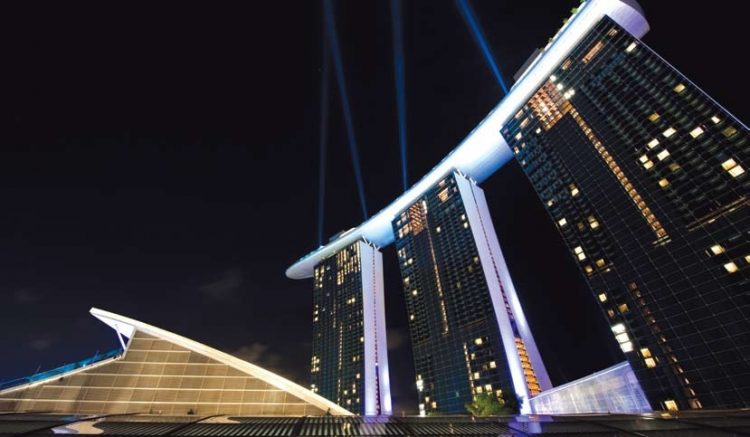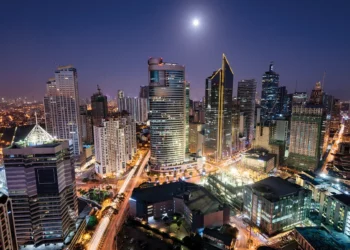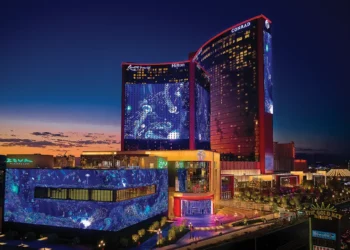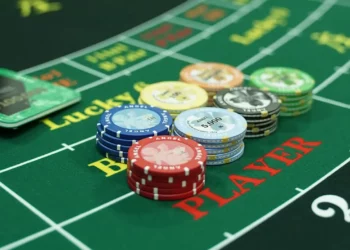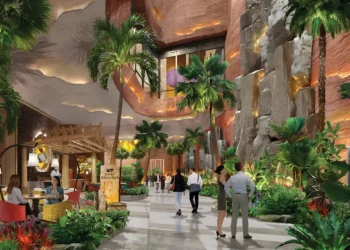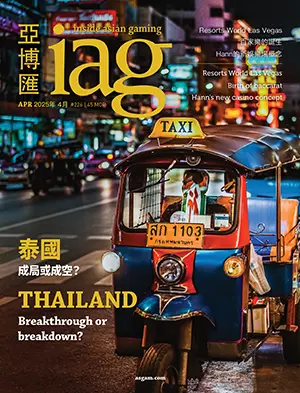Singapore’s slot clubs are contenders once again. A personal view by David Kinsman.
“It ain’t how hard you hit; it’s about how hard you can get hit, and keep moving forward. How much you can take, and keep moving forward. That’s how winning is done.” So says Rocky Balboa’s character in the 2006 update of Hollywood’s famous Rocky movie franchise telling the rags to riches story of a young American boxer.
Singapore’s slot clubs have some things in common with Rocky. People keep counting them out, but they keep getting up off the commercial canvas and fighting back. The launch of casinos in Singapore in 2010 saw a considerable weakening in the gaming revenues of the city’s slot clubs. These establishments are known primarily for their slots, but in reality they were first conceived as community social clubs. The slot machines were only introduced as a way to help subsidise their running costs. The strong community roots of the clubs could in the long run be the key to their survival in the face of very tough competition from the slick entertainment and highly professional management offered by the new casino resorts.
Singapore’s two casinos—Resorts World Sentosa and Marina Bay Sands—have been around for 18 months. Like many a modern boxer, they’re not afraid to showboat and they get heavy promotion from the money men. The clubs have been around for decades. They’re like old boxing pros. Their winnings may be modest, and they may be a little rough around the edges in terms of the products they can offer, but they know how to make the best of their talents even when the odds are stacked against them. And in the Singapore gaming market they are certainly facing stacked odds in the battle with the casinos.
Each club has up to 40 gaming machines and is run by either a social group, a sport club or a government or industry organisation. The venues, stocked with gaming devices known locally as ‘fruit machines’—a term borrowed from the pub slot machines and the amusement with prizes devices found in the United Kingdom—are part of Singapore’s social infrastructure. They play an important part in providing community based facilities to Singaporeans. As well as there being a limit of 40 machines per venue, no single operator can own more than 200 machines in total. Many operators have fewer machines than are allowed by law. The average number per site is 24. The clubs are regulated by the Inland Revenue Authority of Singapore (IRAS)—Singapore’s taxman. Those regulations are enforced by the Police Licensing Department (PLD).
Today there are fewer than 70 clubs in Singapore operating a total of around 1,700 gaming machines. After the opening of Resorts World Sentosa and Marina Bay Sands in the first half of 2010, Singapore’s clubs saw their slot revenues fall by up to 60% in some cases. On average, the city-state’s licensed clubs saw a 35% to 40% drop in slot revenues. Four clubs closed down their machine operations. It was never the Singapore government’s intention that gaming machines would be a major revenue driver for the Singapore club industry. But in reality, over the four decades since slot club liberalisation, the profits generated from gaming machines had become the main source of income for all the clubs. The dramatic reduction in revenue following the launch of the casinos has created serious financial issues for them.
Uneven playing field
The main reason slot players deserted the clubs was that they quickly found they got more entertainment for their dollars at the casinos. The casinos can afford to give more money back to the layers because from the moment they opened they faced a less onerous tax liability than the clubs. The casinos also offer a greater choice of slot product than do the clubs.
The casinos between them operate around 5,000 machines. The clubs have only around one third as many. Casino slot machines are taxed at 15% of net gaming revenues, i.e., the amount after winnings to players are deducted. However, the taxation system covering clubs was—until May this year—an unusual method of calculation based on the coins in the drop box. This meant clubs had to use coins, and club slot machines had to lock up when any win of 200 credits was achieved. Prior to May, wins of 200 credits and above had to be distributed via a hand pay. Only then could the customer recommence play. The slot club tax burden was calculated on coins in the drop box, plus a notional increase of 37.5%. That total was then taxed at 30%. Hand pays could not be deducted from the taxable total. Thus, the effective tax rate statistically being applied to clubs was up to 60% of net gaming revenue—four times the rate applied to the casinos’ profits.
Singapore’s casino regulations state no casino gaming machine may operate at lower than 90% RTP [return to player]—the percentage of slot handle that an establishment pays back to its players over a given amount of time. There are no formal technical standards for slot operations in slot clubs, and thus no statutory minimum for RTP. In practical terms, however, the clubs have found it necessary to operate at around 82% RTP in order to achieve adequate returns. This has created great differences in the club machines, their game styles and denominations, compared to the machines in the casinos. The drop box taxation system prevented the clubs from using ticket in ticket out technology (TITO) of the sort used throughout Singapore’s casino resorts. It also prevented the clubs from going completely cashless.
Casinos have also been very successfully operating low denomination games—at two cents and five cents, in 25-line, 50-line, and 100-line game formats. Clubs—again due to their taxation regime—were forced to operate higher denominations like 20 cents and 50 cents, with in the main only five-line and eight-line game formats. After the two casinos opened, the success of their low denomination, 50-line machines overwhelmed the clubs. Many of the club players literally flocked to the casinos, resulting in the clubs seeing around two thirds of their business disappear almost overnight. The S$100 casino entry levy had no effect in limiting the flow of key local players away from the clubs. Even before the arrival of the casinos, though, the clubs had been negotiating with the Singapore taxman for a new system to allow them to be more competitive in the local and regional leisure markets. With the advent of the casinos, the pressure for this change became urgent.
In the final quarter of 2010, IRAS began consultation with the clubs and gaming machine manufacturers and agents to evaluate the situation. They received numerous submissions all focusing on a profit tax to replace the cumbersome and limiting coins in the drop box calculation. Those taking part in the talks cited in support of a profit tax the fact that such a system was already in place in slot clubs in Australia, the UK and the USA. They also pointed out that Singapore’s casinos were paying tax on profits, rather than on handle.
Modest reform
IRAS rejected the profit tax proposal. In early 2011, IRAS announced to the industry it was going to introduce instead a tax levied at 9.5% of turnover for each of the slot clubs in Singapore. It added, however, that requirements such as the 200-credit lock-up and coin operation would be removed as part of an effort to modernise the taxation and oversight of the clubs. The required changes to legislation were approved by the Singapore Parliament early in 2011. From 1st May, all clubs have changed over to the turnover tax system, which represents a slight drop in the clubs’ tax burden. The 9.5% turnover tax works out to a 54% tax on net gaming revenues, as set against the 15% tax paid by the casinos. When the clubs paid the equivalent of 60% tax on net gaming revenues, that was a rate four times higher than the casinos. Now the clubs’ tax burden is equivalent to 3.6 times that of the casinos. It’s not a huge improvement, but better than nothing. Nonetheless, Singapore remains the only jurisdiction in the world I know of that taxes publicly-owned gaming—the slot clubs—at a higher rate than privately-owned gaming.
The IRAS decision to go with a turnover tax system effectively means the clubs are still locked into a lower RTP than the casinos. They can’t set their RTP any higher than 82% or 83%. Were they to do so, they would have to raise the entry cost of betting on their slots (in terms of minimum numbers of lines) in order to stay profitable. When the government taxes 9.5% of turnover, that leaves 90.5%. Out of that, clubs need at least 6% of turnover to run their businesses, pay wages, meet other costs and make a surplus. That leaves 84.5%. Clubs then need to run promotions and provide jackpots, accounting for another 1.5% of turnover. To cover all those overheads and still be modestly profitable, the club machines’ RTP cannot be set much higher than 82.5%.
Not surprisingly, the clubs and their supporters have heavily criticised the IRAS reforms as being half-hearted—especially as 100% of the clubs’ profits are ploughed back into the community. It’s true that casinos appear to have had a significant positive impact on Singapore’s tourism revenues as well as on the tax system—as the government intended. But their profits are solely for the benefit of private and institutional shareholders. Turnover taxes have been tried in other major gaming jurisdictions such as New South Wales in Australia, but have failed. They have subsequently been replaced with taxes on profits.
The new club tax system is simpler and easier to administer than its predecessor, but a wide gap still exists between the ways casinos can do business with gaming machines, and how the clubs can operate with them. Clubs are still barred from giving players bonus points based on turnover, yet the casinos are allowed to do so. The focus of the new club tax system is on turnover, yet the clubs have been limited by regulation as to what they can do to increase turnover. Any promotion that encourages turnover is actually illegal. This has created yet another imbalance between the club business model and the casino one.
Comeback
It has only been three months since the turnover tax system was introduced for the clubs. And yet, even with the modest help the turnover tax system has provided, it seems the clubs are fighting back. They may even be regaining some or much of the ground they lost during 2010. Some have been slow to adopt the necessary business practices to take full advantage of the new regulations, but those that have are pleasantly surprised at the results to date. Those introducing 50-line, five-cent and two-cent machines, and TITO, bill acceptors and cashless operations have gained the most. The effect of removing the 200 credit lock-up, combined with the excitement of the lower denomination 50-line games seems to have had a drastic effect in engaging club players. Some clubs report that players lost to the casinos are now returning. It all points to the idea that local players really do love their slot clubs, and are happy to use them when the clubs are allowed to offer competitive products.
The Singapore casinos went after local slot players early on. Many of the early promotional activities were specifically designed to court them. They included free buses from the Singapore ‘heartland’ districts (a euphemism for low-income areas). Booths were also set up at major shopping centres by the casinos to sign up members for their player loyalty clubs. These types of promotions have since been banned by the Casino Regulatory Authority. The CRA and the Singapore government were not impressed by the casinos’ attempts to recruit lower income locals. Going for such ‘low hanging fruit,’ to use modern business jargon, made plenty of commercial sense to the operators after they had spent billions of dollars to build their honey traps, but wasn’t good politics for Singapore’s lawmakers. They had sold the casino policy to an at times sceptical public on the basis of building up the number of upmarket overseas tourists visiting Singapore. As it turned out, the CRA was able to make use of laws limiting the promotion of gambling in Singapore to curb the heartland marketing drive.
Does the fact the clubs seem to be fighting back suggest a weakening in the appeal of the two casino resorts as far as massmarket electronic gaming customers are concerned? It’s probably too early to say for sure. Things can change quickly in modern gaming. It was only 18 months ago that the clubs had 100% of the gaming machine market in Singapore. Then with the arrival of the integrated resorts the number of machines in the market quadrupled and the clubs’ share of the expanded market dipped below 30%. And yet, Singapore still has the capacity to absorb many, many more machines into the market, compared to other markets of similar demographics. It’s probably fair to assume that won’t happen any time soon. Gambling in general is still very much of a local ‘hot potato’. The public debate since the casinos opened and the government’s desire for the casinos not to focus on local players will probably restrict the growth of product supply. Having said that, the government had a lot of political capital staked on making the casinos a commercial success. Now the IRs have exceeded the expectations of more bearish commentators, the politicians at least have some wiggle room to make things fairer for the slot clubs in future, should they wish to use it.
And the Singapore clubs aren’t standing still. They are learning all the time new ways to compete with the casino big boys. The clubs may have one arm tied behind their collective back in terms of regulations, but with the other arm they’re jabbing away for all they’re worth and scoring points each round. Whether they can land a knockout blow against the casinos in the fight for local slot players will only become clear many rounds from now.
The author, David Kinsman, is a Singapore-based gaming professional who has worked at CEO level in the land-based and online industries. Since early 2008, he served as CEO of Weike Gaming Technologies and recently stood down from that role but continues as an independent director of Weike, Singapore’s only locally based gaming machine and gaming systems manufacturer. He has extensive experience in the Singapore market, having worked with clubs in Singapore providing gaming machines and systems for the past two decades.






